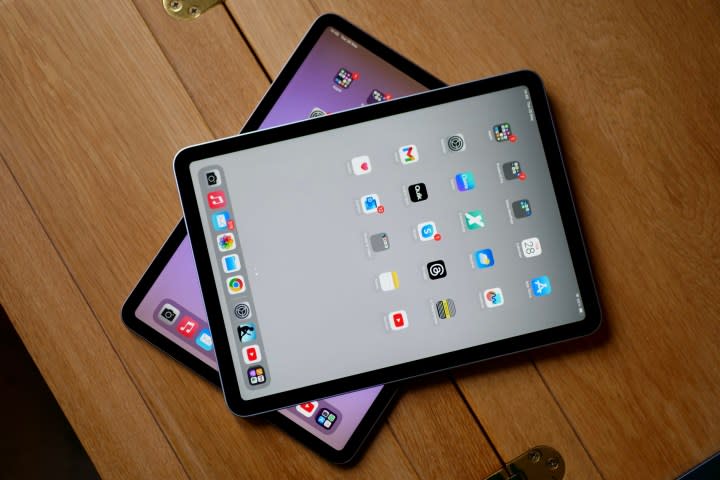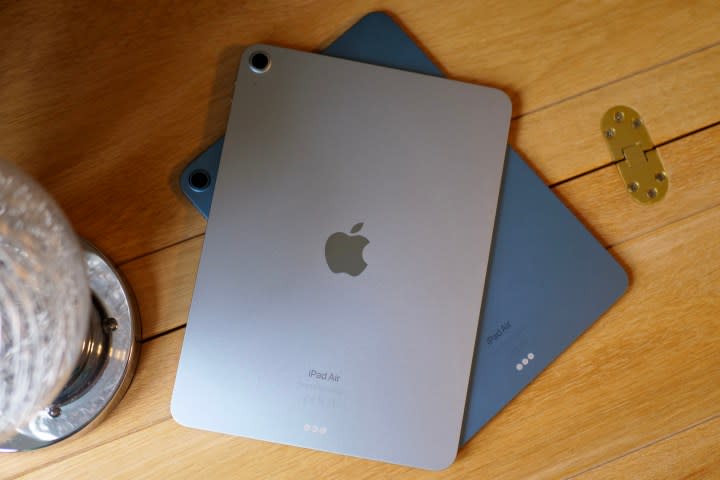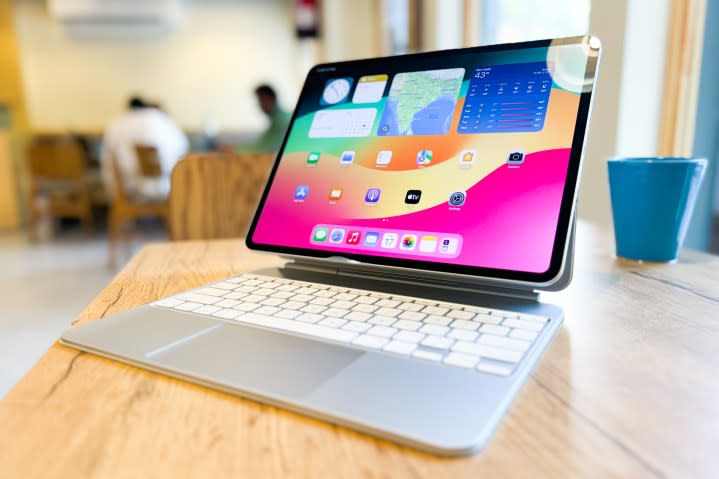I’m a few days into using the new 11-inch iPad Air (2024), and one single feature decision has annoyed me to the point where I’m questioning why it exists at all.
In Apple’s current iPad range, the iPad Pro (2024) is definitely the professional’s choice, while the regular iPad is the one for the bargain hunter. The iPad Air sits awkwardly in between them. While it seems to offer all the power and ability you could want without paying the iPad Pro’s high price, it doesn’t have the ProMotion 120Hz refresh rate screen — and that’s a serious drawback.
Does this missing feature ruin the M2 iPad Air, like it almost did the M1-powered iPad Air (2022)?
My issue with the iPad Air’s display
What’s the screen situation for those not used to poring over iPad spec sheets? The M2 iPad Air (2024) has a 60Hz refresh rate Liquid Retina IPS screen just like the cheaper, regular iPad, and both have the same 2360 x 1640 pixel resolution. To get a 120Hz screen, a technology Apple calls ProMotion, you have to splurge on the iPad Pro with its Ultra Retina XDR screen, and this has the potential to be a very expensive piece of equipment.
It’s a very similar situation to the iPhone, where you need either the iPhone 15 Pro or iPhone 15 Pro Max to get a 120Hz ProMotion screen, as the iPhone 15 and iPhone 15 Plus both have a 60Hz screen. But I can more easily accept that decision as Apple doesn’t have an in-between model in its iPhone 15 range as it does with the iPad, and it makes the buying decision much simpler.
This isn’t a new problem either, as the M1 iPad Air released in 2023 also had the Liquid Retina IPS 60Hz screen. At the time, to my eyes, the tablet’s big screen exacerbated the downside of a 60Hz refresh rate screen, and it almost ruined the M1 iPad for me. It was less smooth when scrolling and during animations, cheapening the experience compared to a ProMotion-equipped iPad model. Has anything changed with the M2 iPad Air, or is this still a tablet hobbled by a lesser screen?
60Hz vs. 120Hz
I’ve been using the iPad Air with the M2 processor for a few days now, and it has replaced the duties of both my 2020 iPad Pro and the M1 iPad Air, meaning it’s called into action for video, web browsing, and using apps like Reddit, Amazon, and Autotrader, plus reading books through the Kindle app. Something very encouraging happened when I started using the tablet, as in some circumstances, the screen seemed to be a tiny bit smoother than I expected. Not by much, but enough that I could see something was different.
Was it all in my mind? To find out, I fired up the M1 iPad Air and my 2020 iPad Pro back into life for a direct, side-by-side comparison. All the time I was doing this, I remembered that when I reviewed the iPhone 15 Plus, I noted the screen was a tiny bit smoother than expected, too, improving on the less eye-friendly experience I’d had with the iPhone 14 Plus. Like the two iPhone models, the two iPad Air models have the same screens, but different processors.
I’ve spent far too long swiping, opening apps, and scrolling through webpages and menus on the three different iPad models in my possession, and have come to the conclusion the M2 iPad Air is sometimes smoother, but it may also all be in my head. It’s such a minuscule change, if it’s there at all, and perhaps only noticeable when you put all the tablets side by side. I found it very hard to show even on video. Don’t be surprised if it’s imperceptible until you see it in person.
Did anything really improve?
Specifically, I think the M2 iPad Air makes the animations between app opening and closing less obvious than on the M1 iPad Air and also a little smoother when scrolling through text. It may not sound like much, but I have found it less distracting and less visually demanding. There are no changes elsewhere, though, and sadly, both seem to have the same level of blur when scrolling through menus, between home screens, and in the App Library.
The 2020 iPad Air is smoother throughout, regardless of what you do on the screen. But there’s a chance you won’t see any difference at all, regardless of the tablet, as the effect of a 60Hz and 120Hz refresh rate isn’t always seen by everyone. I can really see it, though, and while I welcome even the tiniest improvement in system smoothness, I’m hugely annoyed by the fact I have to closely examine these tablets in the first place. For the price, the iPad Air really should have the 120Hz ProMotion screen as standard.
Remember, the M2 iPad Air starts at $600, and the iPad starts at $450, but to get the ProMotion screen, you’ll have to pay at least $1,000 for the iPad Pro. That’s a big jump in price, and with it comes a lot of features many people may not require. I certainly consider the new M4 iPad Pro far too capable for my needs, but the iPad Air would be perfect if only it had the ProMotion screen.
What Apple should have done
Apple has been very tight with upgrades on the M2 iPad Air over its predecessor, with the chip being practically the only one of any note, yet the iPad Pro has a wide range of improvements and additional features, including the new M4 processor, Face ID, four speakers, a 2TB storage model, and the option of the glare-reducing nano-texture glass. It’s this last item that should have been the differentiator between the Pro and the Air’s screen.
Instead of charging extra for the nano-texture glass — it’s an additional $100 — it should have been made standard on the Pro and the iPad Air given the 120Hz ProMotion screen. This would give the iPad Air a reason to exist and help convince people to spend more on it over the much cheaper 10th-generation iPad. The tiny difference I spotted between the M1 iPad Air and M2 iPad Air’s smoothness (which isn’t driven by screen hardware) isn’t enough to warrant any kind of upgrade.
I can see enough of a difference between the 60Hz and 120Hz refresh rate that I want the better screen on my iPad, but as I don’t need the Pro’s M4 processor (I’m not sure anyone does) and other spec updates, it’s very frustrating that I am forced into paying for the Pro to get it. I really like the M2 iPad Air so far, but every time I look at it, I’m reminded it doesn’t have the one feature I really want. And to get it, I’d have to pay at least another $400. That’s poor product planning in my book and not a great way to encourage new iPad sales or, more crucially, iPad upgrades.
Signup bonus from








